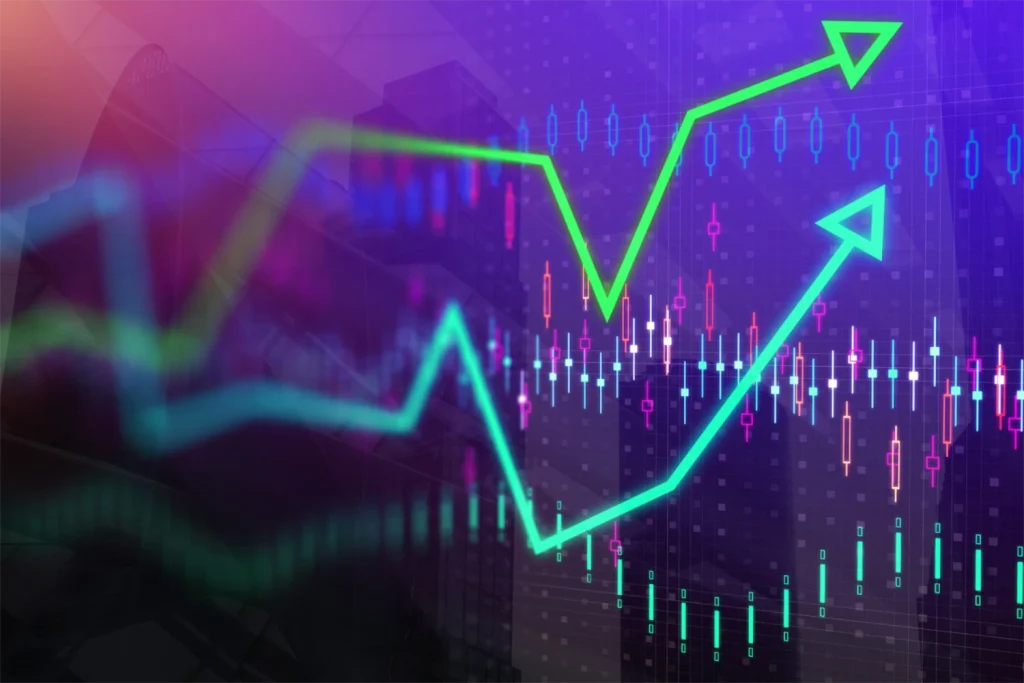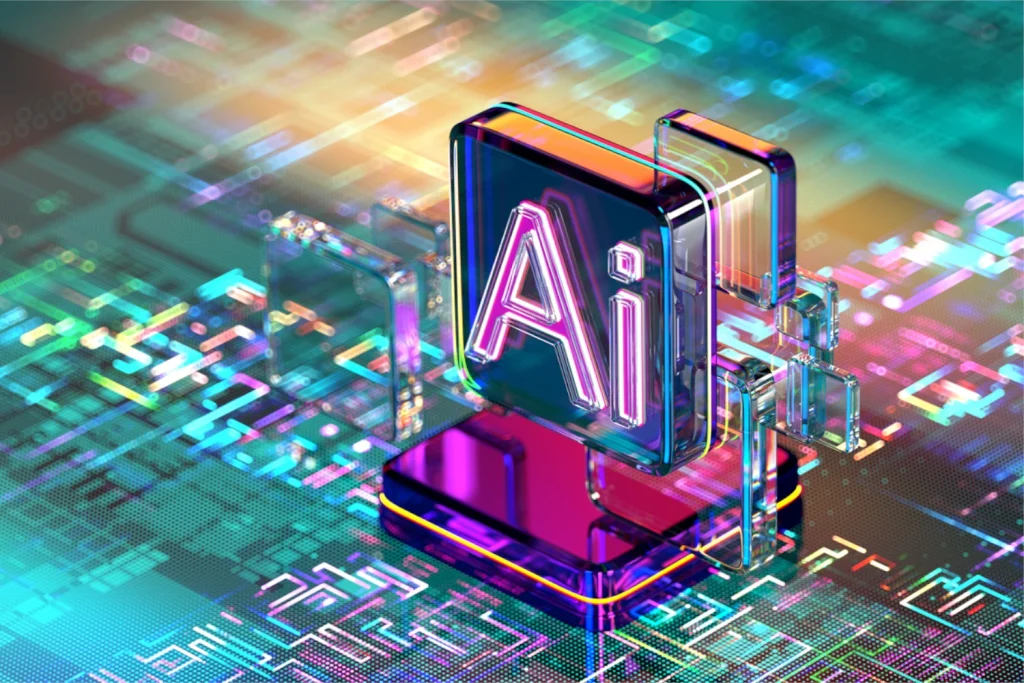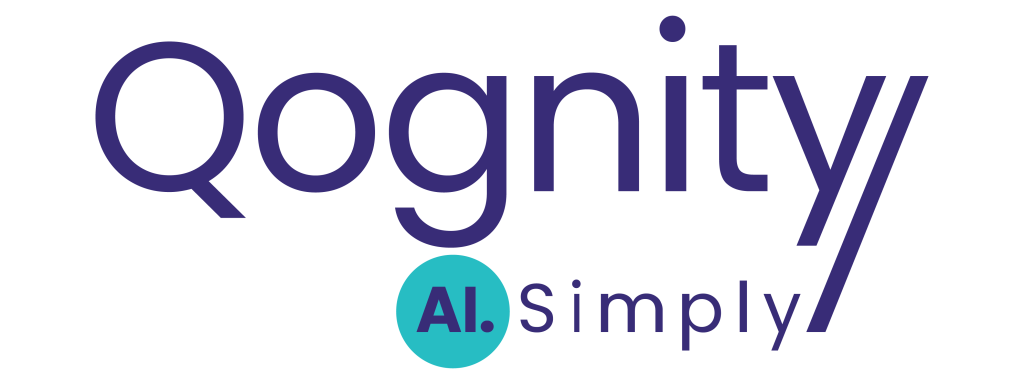As I write this in late August 2025, I can’t help but reflect on what has been the most transformative summer in artificial intelligence history. While most of us were planning beach vacations and summer getaways, the AI world was experiencing a seismic shift that would reshape business, technology, and society for decades to come. This wasn’t just another season of incremental improvements; this was the summer AI truly came of age.
Having followed the AI landscape closely for years, I’ve witnessed many “breakthrough” moments that turned out to be more hype than substance. But Summer 2025 was different. The convergence of massive model releases, record-breaking funding rounds, and genuine technological leaps created a perfect storm of innovation that even AI insiders found breathtaking.
The Great Model Wars: When Giants Collided
The summer began with what industry insiders are now calling the “Great Model Wars of 2025.” In May, Anthropic fired the first shot with Claude 4, a release that fundamentally redefined what we thought possible in AI coding capabilities. Claude 4 Opus didn’t just make small improvements over its predecessors; it achieved an impressive 72.5% performance on the SWE-bench, a well-known, difficult software engineering benchmark that had stumped earlier models. [1].
What struck me most about Claude 4 wasn’t just its raw performance, but its hybrid reasoning architecture. The model can seamlessly switch between rapid-fire responses for simple queries and extended “thinking” modes for complex problems. It’s like having a senior developer who can instantly switch between quick clarifications and deep architectural thinking.
But Anthropic wasn’t alone in this summer sprint. Google DeepMind responded in June with Gemini 2.5 Pro, a model that pushed the boundaries of what we consider possible in AI reasoning. With an 86.4 score on the GPQA Diamond benchmark, a test designed to challenge PhD-level reasoning in physics, chemistry, and biology, Gemini 2.5 Pro has just raised the bar and achieved performance that approaches that of human experts. [2].
The most impressive aspect of Gemini 2.5 Pro, however, is its massive 1 million token context window. To put this in perspective, that’s roughly equivalent to processing 750 pages of text in a single conversation. For businesses dealing with complex documentation, legal contracts, or extensive research, this represents a paradigm shift from information retrieval to true information synthesis.
July brought an unexpected wild card when Elon Musk’s xAI launched Grok 4 in a late-night livestream. xAI billed Grok 4 as “the most intelligent model in the world,” and Musk claimed on-air that it was “better than PhD level in every subject, no exceptions.” [3] xAITechCrunch
Grok 4’s technical story centered on scaling reinforcement learning: xAI says it used its Colossus supercomputer, a 200,000-GPU cluster, to run RL training at pretraining scale, enabling native tool use and real-time web/X search. xAI also introduced Grok 4 Heavy, which uses parallel test-time compute to consider multiple hypotheses simultaneously (often described as multi-agent-style collaboration). On pricing, xAI unveiled a $300/month SuperGrok Heavy tier granting access to Grok 4 Heavy and early features, the most expensive consumer AI subscription among major providers at launch.
However, the crown jewel of this summer’s AI advancements was the debut of OpenAI’s GPT-5. Launched in early August, GPT-5 is the highly anticipated successor to GPT-4, representing a significant leap in capability. Sam Altman, OpenAI’s CEO, touted that “GPT-5 is really the first time that one of our models has felt like you can ask a legitimate expert, a PhD-level expert, anything,” [5] underscoring the model’s expert-level intelligence. Not only does GPT-5 excel at coding and complex problem-solving, but it’s also tuned for professional domains like finance and healthcare. In a bold move to drive widespread adoption, OpenAI made GPT-5 available to all 700 million ChatGPT users worldwide, effectively putting “expert-level” AI into everyone’s hands.
The Chinese Open-Source Revolution: A Strategic Masterstroke That Left Meta Behind
While proprietary Western giants battled for supremacy, Chinese AI companies executed perhaps the most strategically significant move of 2025 with their coordinated open-source offensive. Models like DeepSeek R1, Qwen 3, Kimi K2, and MiniMax M1 now dominate global rankings, placing Chinese open-source AI ahead of models from Google and Meta according to LMArena benchmarks [6]. This represents more than just technological advancement; it’s a direct challenge to the entire Western closed-source ecosystem.
DeepSeek R1 exemplifies this efficiency revolution, trained for just $5.6 million using 2,000 NVIDIA H800 chips, a fraction of the cost of models like ChatGPT which required over $100 million in development costs. Meanwhile, Qwen 3 has been adopted by over 90,000 enterprises across various sectors, from e-commerce to insurance, with Alibaba’s models attracting more than 300 million downloads worldwide [7].

Figure 1: Source AI Index 2025, Chapter 2 (“US vs. China Technical Performance”) [8]
China’s decision to open-source models of this caliber reflects a sophisticated understanding of platform dynamics reminiscent of Google’s Android strategy. By democratizing access to frontier AI capabilities, Chinese companies are essentially commoditizing the foundation layer while positioning themselves to capture value in cloud services and applications, what analysts are calling the “Android moment” for AI.
Meta’s LLAMA 4 release in April 2025, meanwhile, proved to be a strategic misstep that highlighted the company’s struggles to keep pace. Despite promises of advanced multimodal capabilities and a 10-million-token context window, LLAMA 4 fell short, with weak reasoning and conversational skills that represented a regression from LLAMA 3 [89]. The release was further overshadowed by allegations of benchmark cheating, sparking widespread skepticism within the tech community [10].
Internal reports suggest that Meta faced significant pressure from Chinese competitors, such as DeepSeek, forcing the company to rush development and adopt a “mixture of experts” approach borrowed from DeepSeek’s methodology. The company was ultimately forced to postpone its flagship LLAMA 4 Behemoth model, despite previous bold claims that it would outperform GPT-4.5, Claude Sonnet 3.7, and Gemini 2.0 Pro.
The implications for businesses are profound. Companies that couldn’t justify the costs of premium AI services suddenly have access to Chinese models that rival or exceed their proprietary counterparts, with DeepSeek driving down AI usage costs by 60-80%. This democratization is accelerating AI adoption across industries that were previously priced out, while Meta finds itself playing catch-up in an increasingly Chinese-dominated open-source landscape.
The Funding Frenzy: When Money Talks, AI Listens
If model releases were the headlines of Summer 2025, the funding landscape was the economic engine driving the entire transformation. July 2025 witnessed something unprecedented: 50 mega-rounds (funding rounds of $100 million or more) in a single month, the highest total since the peak of the tech boom in mid-2022 [11].
What’s particularly striking is that AI companies captured half of these mega-rounds, with seven new AI unicorns emerging in July alone. This isn’t just about throwing money at the latest trend; it represents a fundamental shift in how investors’ view AI’s commercial viability. The focus has moved from “Will AI work?” to “Which AI applications will dominate their markets?”
The funding patterns reveal three critical trends that will shape the next phase of AI development:
- Clinical AI Scaling: Companies like Aidoc, Ambience, and Tala Health raised massive rounds to scale AI solutions across healthcare systems. This represents the maturation of AI from experimental technology to mission-critical infrastructure in healthcare, a sector notoriously resistant to technological change.
- Physical AI Emergence: The funding flowing into companies like Genesis AI, TARS, and Galaxea AI signals the beginning of AI’s expansion beyond digital realms into physical applications. This “Physical AI” trend, championed by NVIDIA’s latest Omniverse libraries and Cosmos models, represents the next frontier where AI meets robotics, autonomous vehicles, and industrial automation [12].
- Direct Incumbent Challenges: Perhaps most intriguingly, companies like Reka AI (positioning itself as a lower-cost alternative to OpenAI) and Perplexity (directly challenging Google’s search dominance) are attracting massive investments. This suggests investors believe the current AI landscape is far from settled, with room for new players to capture significant market share.

Figure 2: Source: Almost Timely News: Revisiting the Basics of AI (2025-08-03) [13]
The Gartner Reality Check: Hype Meets Reality
Amidst all the excitement, Gartner’s 2025 Hype Cycle for Artificial Intelligence provided a sobering reality check that I found both illuminating and strategically important. According to Gartner’s analysis, AI agents and AI-ready data are the two fastest-advancing technologies, sitting at the peak of inflated expectations [14].
More tellingly, Generative AI is sliding into the “Trough of Disillusionment.” This doesn’t mean Generative AI is failing; rather, it’s transitioning from hype-driven adoption to practical, value-focused implementation. For business leaders, this represents a critical inflection point: the time for experimentation is ending, and the era of strategic, ROI-driven AI deployment is beginning.
This shift aligns perfectly with what I’ve observed in conversations throughout the summer with both academics and business insiders. The questions have evolved from “Should we use AI?” to “How do we measure AI’s impact on our bottom line?” and “Which AI investments will provide sustainable competitive advantages?”
AI Agents: The Next Paradigm Shift
If there’s one development from Summer 2025 that will define the next phase of AI evolution, it’s the emergence of truly capable AI agents. Unlike the chatbots and assistants we’ve grown accustomed to, these new AI agents can reason, plan, and execute complex multi-step tasks with minimal human intervention.
The breakthrough came from advances in what researchers call “agentic AI”, systems that can maintain context across extended interactions, learn from their mistakes, and adapt their strategies based on feedback. Companies like OpenAI are reportedly developing “Operator,” an AI agent capable of controlling computers and performing tasks that previously required human intervention [15].
For businesses, this represents a fundamental shift from AI as a tool to AI as a colleague. Instead of using AI to enhance human productivity, we’re moving toward AI systems that can independently manage entire workflows. The implications for knowledge work, customer service, and business process automation are staggering.
Strategic Implications: What This Means for Business
How can we translate the above landscape for the business sector? Personally, I see Summer 2025 as a watershed moment that demands immediate strategic attention. The rapid pace of AI advancement is creating both unprecedented opportunities and existential risks for businesses across all sectors.
The Competitive Moat Question: Traditional competitive advantages, proprietary data, specialized knowledge, operational efficiency, are being rapidly commoditized by AI. Companies that fail to identify and develop AI-resistant competitive moats risk finding themselves obsolete within 18-24 months.
The Integration Imperative: The companies succeeding in this new landscape aren’t necessarily those with the best AI technology; they’re the ones most effectively integrating AI into their core business processes. The winners are treating AI as infrastructure, not as a feature.
The Talent Transformation: The skills gap in AI isn’t just about hiring data scientists and machine learning engineers anymore. It’s about developing AI literacy across entire organizations and rethinking job roles in an AI-augmented world.
Looking Ahead: My Predictions for the Next 18 Months
Based on the trends I’ve observed this summer, here are my predictions for where AI is heading:
The Great Consolidation: By mid-2026, I expect we’ll see significant consolidation in the AI model space. While Summer 2025 was characterized by proliferation and competition, the next phase will be about sustainable business models and platform dominance.
Enterprise AI Standardization: Organizations will move from experimental AI projects to standardized AI platforms and governance frameworks. The companies that establish these standards first will capture disproportionate value.
Physical AI Breakthrough: The investments in robotics and autonomous systems will begin paying dividends in 2026, with the first commercially viable AI-powered physical systems reaching market scale.
Regulatory Reckoning: The rapid advancement we’ve witnessed this summer will inevitably trigger regulatory responses. Companies that proactively address AI ethics, safety, and transparency will have significant advantages as regulations emerge.
The Personal Reflection
As I conclude this reflection on AI’s transformative summer, I’m struck by how quickly our relationship with artificial intelligence has evolved. Just two years ago, we marveled at ChatGPT’s ability to write coherent paragraphs. Today, we’re discussing AI systems that can reason through PhD-level problems, write production-quality code, and potentially control our computers.
This isn’t just technological progress; it’s a fundamental shift in the nature of human-machine collaboration. The AI systems emerging from Summer 2025 aren’t just tools; they’re becoming partners in human creativity, problem-solving, and decision-making.
For business leaders, technologists, and anyone trying to navigate this rapidly changing landscape, the message is clear: the time for passive observation has ended. The AI revolution isn’t coming, it’s here, and it’s accelerating. The question isn’t whether AI will transform your industry; it’s whether you’ll be leading that transformation or scrambling to catch up.
Summer 2025 will be remembered as the season when artificial intelligence truly came of age. The question now is: what will we do with that knowledge?
References
[1] Azumo. “Top 10 LLMs Summer 2025 Edition.” August 13, 2025. https://azumo.com/artificial-intelligence/ai-insights/top-10-llms-0625
[2] Azumo. “Top 10 LLMs Summer 2025 Edition.” August 13, 2025. https://azumo.com/artificial-intelligence/ai-insights/top-10-llms-0625
[3] TechCrunch. “Elon Musk’s xAI launches Grok 4 alongside a $300 monthly subscription.” July 9, 2025. https://techcrunch.com/2025/07/09/elon-musks-xai-launches-grok-4-alongside-a-300-monthly-subscription
[4] xAI. “Grok 4”. July 9, 2025. https://x.ai/news/grok-4
[5] Reuters. “OpenAI launches GPT-5 as the AI industry seeks a return on investment.” August 7, 2025. https://www.reuters.com/business/retail-consumer/openai-launches-gpt-5-ai-industry-seeks-return-investment-2025-08-07/
[6] TechWire Asia. “The China open-source AI revolution that’s rattling Silicon Valley.” July 24, 2025. https://techwireasia.com/2025/07/china-open-source-ai-models-global-rankings/
[7] SecondTalent. “Top 5 Chinese Open-Source LLMs Dominating 2025.” July 22, 2025 https://www.secondtalent.com/resources/chinese-open-source-llms-ai-leaders/
[8] Artificial Intelligence Index Report 2025: Chapter 2—Technical Performance. (2025). “US vs. China Technical Performance” (pp. 16–18) and Chapter Highlights (p. 5). Stanford University, AI Index.
[9] Towards AGI / Medium. “Meta Drops Llama 4: Why Is It Such a Disappointing Release?” April 6, 2025. https://medium.com/towards-agi/why-metas-llama-4-release-disappoints-6acd23ac42b4
[10] TechStartups. “Llama 4 Scandal: Meta’s release of Llama 4 overshadowed by cheating allegations on AI benchmark.” April 8, 2025. https://techstartups.com/2025/04/08/llama-4-scandal-metas-release-of-llama-4-overshadowed-by-cheating-allegations-on-ai-benchmark/
[11] CB Insights. “No summer break for AI: July 2025 hits 50 mega-rounds and 7 new unicorns.” August 11, 2025. https://www.cbinsights.com/research/report/mega-round-tracker-july-2025/
[12] NVIDIA. “NVIDIA Research Shapes Physical AI.” August 11, 2025. https://blogs.nvidia.com/blog/physical-ai-research-siggraph-2025/
[13] AlmostTimely Substack. “Revisiting the Basics of AI (2025-08-03).” August 3, 2025. https://almosttimely.substack.com/p/almost-timely-news-revisiting-the
[14] Gartner. “Gartner Hype Cycle Identifies Top AI Innovations in 2025.” August 5, 2025. https://www.gartner.com/en/newsroom/press-releases/2025-08-05-gartner-hype-cycle-identifies-top-ai-innovations-in-2025
[15] First Movers. “True AI Agents in 2025: OpenAI’s Game-Changing ‘Operator’.” August 24, 2025. https://firstmovers.ai/ai-agents-2025/



